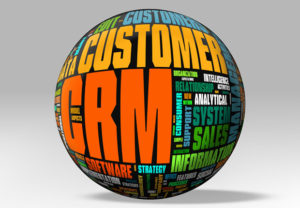
There’s a chicken-and-egg issue with digital disruption. Making decisions based on numbers instead of gut instinct is recognized to be a superior approach in many situations, but before you can get to decision making, people have to be able to use things like artificial intelligence and machine learning.
Humans are not naturals when it comes to numbers; thinking back to high school algebra is all it takes to convince most of us.
Humans are really good at things like relationships and reading faces. So there should be a natural association between providing crunched numbers to customer-facing employees and their use. Before you can expect employees to take on thinking with numbers more than they ever have, however, it’s got to be dead solid easy to crunch the numbers and deliver their meaning.
For much of the AI universe so far, that crunching and delivery has been focused on things involving a next-best algorithm. Next-best offer in sales perhaps, or next-best service solution in customer service. There’s a lot more we can do.
Salesforce Delivers Einstein Analytics for a Broader Audience
Salesforce on Wednesday announced four new products based on its Einstein analytics engine, which are designed to spread analytics to more parts of an organization and to enable more types of employees to work with the tools.
All introductions support clicks or code, thus enabling admins and developers to access functionality according to their skill levels. Briefly, the introductions include the following:
- Einstein Translation, which enables admins and developers to set up automatic language translation. If a user enters data in a different language the system instantly converts to that language. The company has not said how many languages initially are supported. The product is in pilot, so look for more information later.
- Einstein Optical Character Recognition. OCR has been around a long time, because it works and is an important part of scraping usable data off documents. Initially Salesforce sees this as a way to streamline data entry. It’s also in pilot.
- Einstein Prediction Builder enables admins and developers to build AI models for apps running on the Salesforce platform with a declarative setup tool. It’s generally available.
- Einstein Predictions Service enables admins to embed Einstein AI analytics into third-party systems like enterprise resource planning or human resources. It’s also generally available.
Underscoring Trust
In a move that seems like a commentary on the troubles that social media companies are having, Salesforce restated its commitment to its core values — especially trust, in this case. The company went out of its way to state that its AI products are transparent, responsible and accountable.
For instance, the system provides users with justifications for predictions based on which factors influence a prediction. Also, protected fields warn of potential bias in datasets with pop-up alerts. Model metrics evaluate the accuracy and performance of AI models. If only things like this were available in social media.
My Two Bits
A few years ago, when sales analytics was the only analytics game in town, I remember some emerging vendors telling me it was hard to get customers to use their tools to develop their own unique analyses. They were happy to use all of the reports that came with the tool out of the box, though, which led to delivering a large number.
This rang true in my experience, because sales veterans (and I am one) seem highly attached to their unique approaches. At the time, I thought that asking them to develop their own analyses was akin to asking a fish to invent fire.
In the years since, I discovered that sales people were not unique. So making the use of analytics as easy as possible is a prerequisite for getting on with a company’s digital disruption.
Clicks and code, the two approaches Salesforce emphasized in this announcement, are not out of the ordinary for most things the company enables. Salesforce wants to reach the broadest audience possible for its solutions, and that’s good. However, it has extra importance at the intersection of digital disruption and analytics.























































